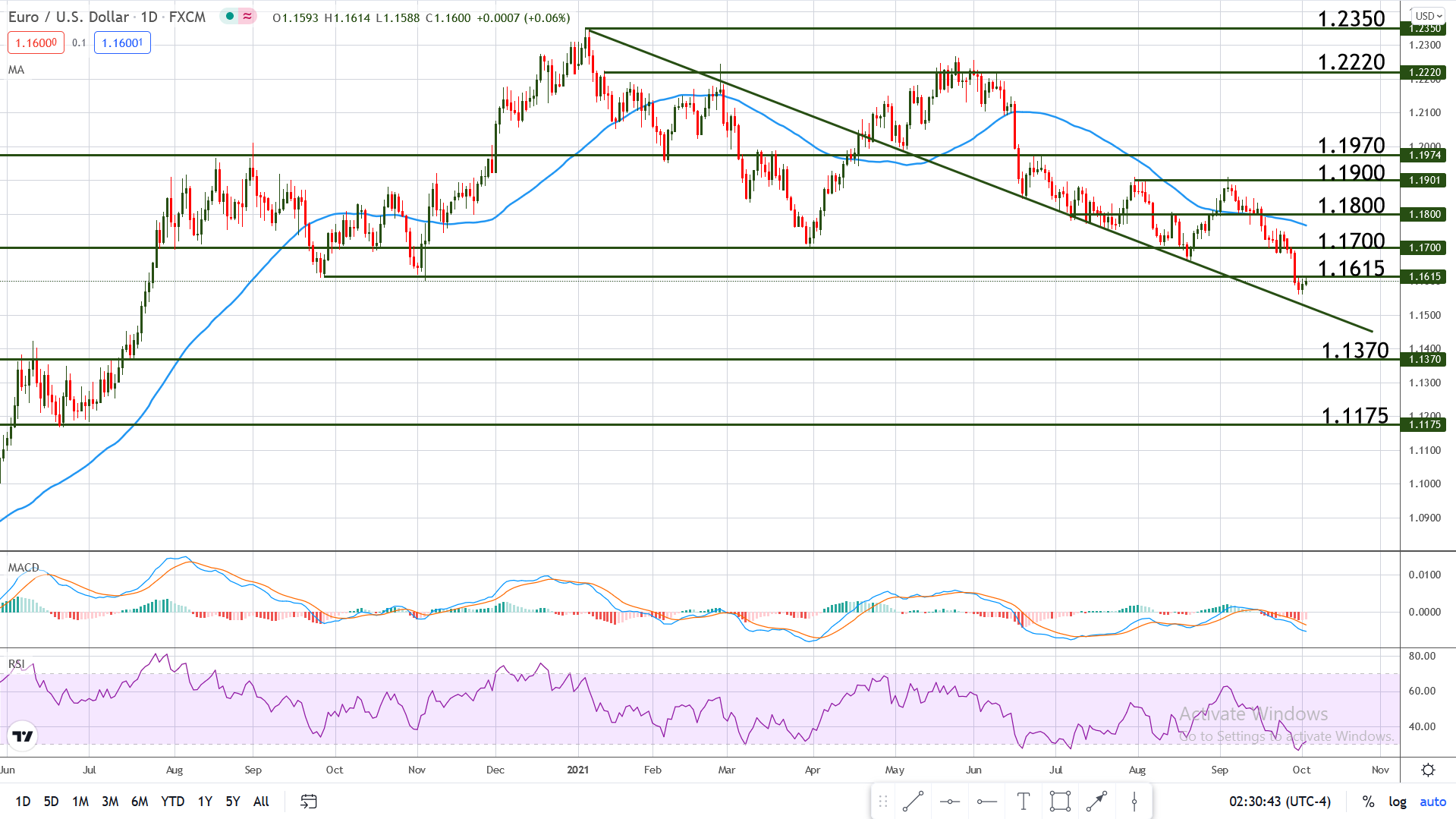The Catalyst That Can Decide the Tapering Timeline
The U.S. Jobs Data –
Last week the US Dollar climbed to a 14-month high against the Euro, as market participants estimated that the Fed will raise rates before the other central banks, and positive U.S. data came out. The Core PCE Price Index exceeded expectations, showing a 0.3% increase, while the ISM Manufacturing PMI posted a reading of 61.1, slightly above the forecast of 59.6.
The Euro slipped below 1.1600 against the greenback, reaching a low of 1.1563 but has erased some of the losses and is currently trading just a few pips above 1.1600. The move back up is mostly attributed to profit-taking at the end of the week.
The focus this week will be on the U.S. jobs data, which plays a major role in the tapering timeline, as outlined by Fed Chair Powell many times. The U.S. employment situation is always a market-mover but improvement in the jobs market could be the trigger for the Fed to begin tapering of asset purchases, followed by a rate hike next year.
Key Events for the Week Ahead
The first notable event of the week will be the release of the ISM Services PMI, scheduled for Tuesday at 2:00 pm GMT. This is a survey derived from the opinions of about 300 purchasing managers from the services sector; it gauges their opinions regarding the overall business conditions in the sector and acts as a leading indicator of economic health. The expected reading is 59.9, slightly lower than the previous 61.7; higher numbers usually strengthen the US Dollar.
An hour later, at 3:00 pm GMT, ECB President Lagarde will speak in Frankfurt. Although the impact of the speech is uncertain, it’s always a good idea to keep an eye on the speeches of heads of central banks.
Wednesday at 12:15 pm GMT we take a first look at the U.S. jobs market with the release of the ADP Non-Farm Employment Change. The indicator shows the change in the number of employed people excluding the government and the farming industry, and it tries to mimic the NFP that comes out 2 days later. The forecast is 455K, an increase from last month’s 374K.
Friday at 12:30 pm GMT, the much-anticipated Non-Farm Payrolls report will be released and expected to show a hefty increase of 490K new jobs, from the previous 235K. Traders should also keep an eye on the Average Hourly Earnings and the Unemployment Rate that come out at the same time.
Technical Outlook – EUR/USD
The greenback made serious advances against the Euro last week but now it seems that the pair’s bearish momentum is starting to wane. Price is re-testing the S/R zone between 1.1600 – 1.1615 and the indicators are showing mixed signals.
The Relative Strength Index is oversold, which indicates that a bounce may soon follow, but the MACD is still heading lower, with the lines spread apart, which indicates bearish momentum. Either way, the pair just made a new significant low and broke an important support level, thus the balance of power is shifted towards the bears.
As long as the pair is trading below the 50 days Moving Average, the bias is bearish, and the first target is represented by the long-term trend line that sits just below the current price. A move above 1.1600 – 1.1615 may delay the descent, or even trigger the start of a ranging period, at least until the release of the NFP.
